 W
WThe African wildcat is a small wildcat species native to Africa, West and Central Asia up to Rajasthan in India and Xinjiang in China. The IUCN Red List status Least Concern is attributed to the species Felis silvestris, which at the time of assessment also included the African wildcat as a subspecies.
 W
WThe sable antelope is an antelope which inhabits wooded savanna in East and Southern Africa, from the south of Kenya to South Africa, with a separate population in Angola.
 W
WThe chacma baboon, also known as the Cape baboon, is, like all other baboons, from the Old World monkey family. It is one of the largest of all monkeys. Located primarily in southern Africa, the chacma baboon has a wide variety of social behaviors, including a dominance hierarchy, collective foraging, adoption of young by females, and friendship pairings. These behaviors form parts of a complex evolutionary ecology. In general, the species is not threatened, but human population pressure has increased contact between humans and baboons. Hunting, trapping, and accidents kill or remove many baboons from the wild, thereby reducing baboon numbers and disrupting their social structure.
 W
WThe black mongoose is a species of mongoose found in Namibia and Angola. Although originally described as a separate species by Thomas (1928), it has often been considered a subspecies of the slender mongoose. However, genetic analysis has confirmed its status as a separate species. Evidence suggests the two species diverged around four million years ago, likely due to some populations becoming separated as the habitat in southern Africa was changing. The black mongoose now occupies a distinct habitat in areas with large boulders and rocky outcrops known as inselbergs in the mountainous regions of northwest Namibia and southwest Angola. After remaining in these areas for millions of years, the black mongoose is highly specialized to survive in the harsh arid environment.
 W
WThe black-tailed tree rat, also called black-tailed acacia rat or black-tailed thallomys,, is a species of rodent in the family Muridae. It is found in Angola, Botswana, Namibia and South Africa, where its natural habitat is subtropical or tropical dry shrubland. It is both nocturnal and arboreal and makes bulky nests in the trees, often acacias, where it feeds on leaves and buds.
 W
WThe bontebok is a subspecies of Damaliscus pygargus, an antelope found in South Africa, Lesotho and Namibia. D. pygargus has two subspecies; the bontebok, occurring naturally in the Fynbos and Renosterveld areas of the Western Cape, and the blesbok occurring in the Highveld.
 W
WBrants's whistling rat or Brants' whistling rat is one of two species of murid rodent in the genus Parotomys. It is found in Botswana, Namibia, and South Africa where its natural habitats are subtropical or tropical dry shrubland and pastureland. It was first described in 1834 by the Scottish zoologist Andrew Smith who named it in honour of the Dutch zoologist and author Anton Brants.
 W
WBurchell's zebra is a southern subspecies of the plains zebra. It is named after the British explorer and naturalist William John Burchell. Common names include the bontequagga, Damaraland zebra, and Zululand zebra. Burchell's zebra is the only subspecies of zebra which may be legally farmed for human consumption.
 W
WThe Mohol bushbaby is a species of primate in the family Galagidae which is native to mesic woodlands of the southern Afrotropics. It is physically very similar to the Senegal bushbaby, and was formerly considered to be its southern race. The two species differ markedly in their biology however, and no hybrids have been recorded in captivity.
 W
WThe black-footed cat, also called the small-spotted cat, is the smallest wild cat in Africa, having a head-and-body length of 35–52 cm (14–20 in). Despite its name, only the soles of its feet are black or dark brown. With its bold small spots and stripes on the tawny fur, it is well camouflaged, especially on moonlit nights. It bears black streaks running from the corners of the eyes along the cheeks, and its banded tail has a black tip.
 W
WChapman's zebra, named after its discoverer James Chapman, is a closely related subspecies of the plains zebra.
 W
WThe Southeast African cheetah is the nominate cheetah subspecies native to East and Southern Africa. The Southern African cheetah lives mainly in the lowland areas and deserts of the Kalahari, the savannahs of Okavango Delta, and the grasslands of the Transvaal region in South Africa. In Namibia, cheetahs are mostly found in farmlands.
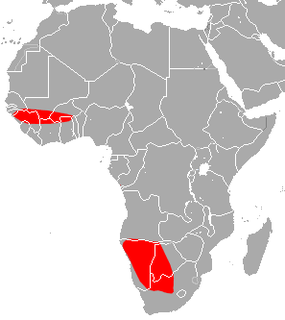 W
WDent's horseshoe bat is a species of bat in the family Rhinolophidae. It is found in Angola, Botswana, Ghana, Guinea, Guinea-Bissau, Namibia, South Africa, and Zimbabwe. The bat's natural habitats are dry savannah country and it roosts in caves and other subterranean habitats.
 W
WKirk's dik-dik is a small antelope native to Eastern Africa and one of four species of dik-dik antelope. It is believed to have six subspecies and possibly a seventh existing in southwest Africa. Dik-diks are herbivores, typically of a fawn color that aids in camouflaging themselves in savannah habitats. According to MacDonald (1985), they are also capable of reaching speeds up to 42 km/hour. The lifespan of Kirk's dik-dik in the wild is typically 5 years, but may surpass 10 years. In captivity, males have been known to live up to 16.5 years, while females have lived up to 18.4 years.
 W
WHeaviside's dolphin, is one of four dolphins in the genus Cephalorhynchus. The small cetacean is endemic to the Benguela ecosystem along the southwest coast of Africa.
 W
WThe common eland, also known as the southern eland or eland antelope, is a savannah and plains antelope found in East and Southern Africa. It is a species of the family Bovidae and genus Taurotragus. An adult male is around 1.6 metres (5') tall at the shoulder and can weigh up to 942 kg (2,077 lb) with an average of 500–600 kg (1,100–1,300 lb), 340–445 kg (750–981 lb) for females). It is the second largest antelope in the world, being slightly smaller on average than the giant eland. It was scientifically described by Peter Simon Pallas in 1766.
 W
WDesert elephants or desert-adapted elephants are not a distinct species of elephant but are African bush elephants that have made their homes in the Namib and Sahara deserts in Africa. It was believed at one time that they were a subspecies of the African bush elephant, but this is no longer thought to be the case. Desert-dwelling elephants were once more widespread in Africa than they are now and are currently found only in Namibia and Mali. They tend to migrate from one waterhole to another following traditional routes which depend on the seasonal availability of food and water. They face pressure from poaching and from changes in land use by humans.
 W
WThe bat-eared fox is a species of fox found on the African savanna. It is the only extant species of the genus Otocyon and considered a basal canid species. Fossil records show this canid to first appear during the middle Pleistocene.
 W
WThe Cape fox, also called the asse, cama fox or the silver-backed fox, is a small fox, native to southern Africa. It is also called a South African version of a fennec fox due to their big ears. It is the only true fox occurring in sub-Saharan Africa, and it retains primitive characteristics of Vulpes because it diverged early in the evolutionary history of the group.
 W
WThe gemsbok, gemsbuck or South African oryx is a large antelope in the genus Oryx. It is native to the arid regions of Southern Africa, such as the Kalahari Desert. Some authorities formerly included the East African oryx as a subspecies.
 W
WThe Angolan giraffe, also known as the Namibian giraffe, is a subspecies of giraffe that is found in northern Namibia, south-western Zambia, Botswana, and western Zimbabwe.
 W
WThe red hartebeest is a species of even-toed ungulate in the family Bovidae found in Southern Africa. More than 130,000 individuals live in the wild. The red hartebeest is closely related to the tsessebe and the topi.
 W
WThe Hartmann's mountain zebra is a subspecies of the mountain zebra found in far south-western Angola and western Namibia. Hartmann's mountain zebras prefer to live in small groups of 7-12 individuals. They are agile climbers and are able to live in arid conditions and steep mountainous country.
 W
WThe black-backed jackal is a canine native to eastern and southern Africa. These regions are separated by roughly 900 kilometers.
 W
WThe klipspringer is a small antelope found in eastern and southern Africa. The sole member of its genus, the klipspringer was first described by German zoologist Eberhard August Wilhelm von Zimmermann in 1783. The klipspringer is a small, sturdy antelope; it reaches 43–60 centimetres at the shoulder and weighs from 8 to 18 kilograms. The coat of the klipspringer, yellowish gray to reddish brown, acts as an efficient camouflage in its rocky habitat. Unlike most other antelopes, the klipspringer has a thick and coarse coat with hollow, brittle hairs. The horns, short and spiky, typically measure 7.5–9 cm.
 W
WThe greater kudu is a woodland antelope found throughout eastern and southern Africa. Despite occupying such widespread territory, they are sparsely populated in most areas due to declining habitat, deforestation, and poaching. The greater kudu is one of two species commonly known as kudu, the other being the lesser kudu, T. imberbis.
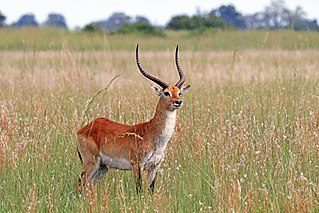 W
WThe lechwe, red lechwe or southern lechwe, is an antelope found in wetlands of south central Africa.
 W
WMacroscelides flavicaudatus is a species of elephant shrew in the family Macroscelididae found in the central Namib desert and southern Namibia.
 W
WMacroscelides micus is a species of elephant shrew in the family Macroscelididae. It is only found in gravel plains in the Etendeka formation of north-west Namibia. Measuring about 7.3 inches (19 cm) long and weighing less than an ounce, the species is the smallest in the elephant shrew family.
 W
WThe malbrouck is an Old World primate from Africa that belongs to the genus Chlorocebus. The species is sometimes classified as a subspecies of the vervet monkey, or of the widespread grivet.
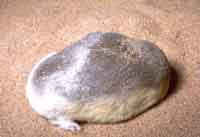 W
WGrant's golden mole is a golden mole species. It is the only member of the genus Eremitalpa.
 W
WThe common dwarf mongoose is a mongoose species native to Angola, northern Namibia, KwaZulu-Natal in South Africa, Zambia and East Africa. It is part of the genus Helogale and as such related to Helogale hirtula.
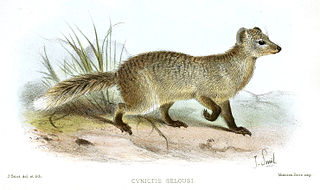 W
WSelous's mongoose is a mongoose species native to Southern Africa. It is the only member of the genus Paracynictis.
 W
WThe Angolan slender mongoose is a mongoose native to southwestern Africa, specifically southwestern Angola and northwestern Namibia. It has been listed as "Least Concern" on the IUCN Red List, as it is not threatened and thought to be common. It has a long, slim body and there are different colour forms, a black or dark brown form in the southern part of its range, and a yellowish- or reddish-brown form in the north. This mongoose inhabits dry, rocky habitats and feeds on insects, scorpions and small vertebrates.
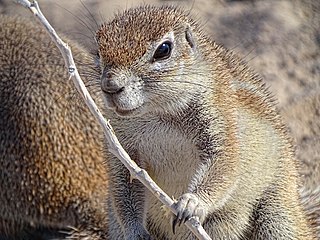 W
WThe mountain ground squirrel is a rodent that is native to southwestern Angola, western Namibia, and western South Africa. It is also known as the Kaoko ground squirrel or the Damara ground squirrel.
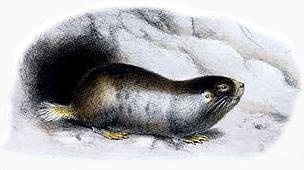 W
WThe Namaqua dune mole-rat is a species of rodent in the family Bathyergidae.
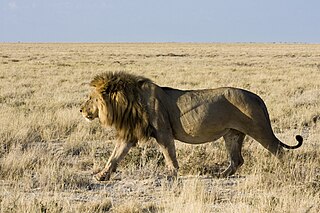 W
WPanthera leo melanochaita is a lion subspecies in Southern and East Africa. In this part of Africa, lion populations are regionally extinct in Lesotho, Djibouti and Eritrea, and threatened by loss of habitat and prey base, killing by local people in retaliation for loss of livestock, and in several countries also by trophy hunting. Since the turn of the 21st century, lion populations in intensively managed protected areas in Botswana, Namibia, South Africa and Zimbabwe have increased, but declined in East African range countries. In 2005, a Lion Conservation Strategy was developed for East and Southern Africa.
 W
WThe southern reedbuck, rietbok or common reedbuck is a diurnal antelope typically found in southern Africa. It was first described by Pieter Boddaert, a Dutch physician and naturalist, in 1785. It is placed in the genus Redunca and family Bovidae. This antelope has an average mass of 58 kg (128 lb) and a body length of about 134–167 cm (53–66 in).
 W
WThe serval is a wild cat native to Africa. It is rare in North Africa and the Sahel, but widespread in sub-Saharan countries except rainforest regions. On the IUCN Red List it is listed as Least Concern. Across its range, it occurs in protected areas, and hunting it is either prohibited or regulated in range countries.
 W
WSharpe's or northern grysbok is a small, shy, solitary antelope that is found from tropical to south-eastern Africa.
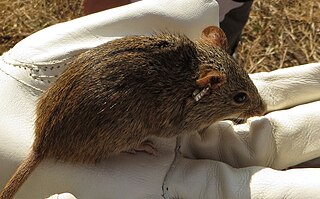 W
WThe single-striped grass mouse or single-striped lemniscomys is a species of rodent in the family Muridae.
 W
WThe sitatunga or marshbuck is a swamp-dwelling antelope found throughout central Africa, centering on the Democratic Republic of the Congo, the Republic of the Congo, Cameroon, parts of Southern Sudan, Equatorial Guinea, Burundi, Ghana, Botswana, Rwanda, Zambia, Gabon, the Central African Republic, Tanzania, Uganda and Kenya. The sitatunga is confined to swampy and marshy habitats. Here they occur in tall and dense vegetation as well as seasonal swamps, marshy clearings in forests, riparian thickets and mangrove swamps.
 W
WThe south-western black rhinoceros is a subspecies of the black rhinoceros, living in southwestern Africa. It is currently listed as near threatened by the IUCN. The biggest threat towards the subspecies Diceros bicornis occidentalis is illegal poaching.
 W
WThe Southern African wildcat is an African wildcat subspecies native to Southern and Eastern Africa. In 2007, it was tentatively recognised as a distinct subspecies on the basis of genetic analysis. Morphological evidence indicates that the split between the African wildcat subspecies in Africa occurred in the area of Tanzania and Mozambique.
 W
WThe southern white rhinoceros or southern square-lipped rhinoceros, is one of the two subspecies of the white rhinoceros. It is the most common and widespread subspecies of rhinoceros.
 W
WThe Cape ground squirrel or South African ground squirrel is found in most of the drier parts of southern Africa from South Africa, through to Botswana, and into Namibia, including Etosha National Park.
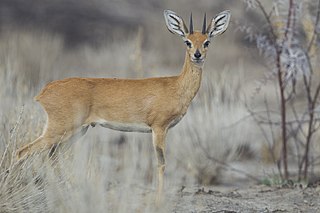 W
WThe steenbok is a common small antelope of southern and eastern Africa. It is sometimes known as the steinbuck or steinbok.
 W
WThe blue wildebeest, also called the common wildebeest, white-bearded wildebeest, or brindled gnu, is a large antelope and one of the two species of wildebeest. It is placed in the genus Connochaetes and family Bovidae, and has a close taxonomic relationship with the black wildebeest. The blue wildebeest is known to have five subspecies. This broad-shouldered antelope has a muscular, front-heavy appearance, with a distinctive, robust muzzle. Young blue wildebeest are born tawny brown, and begin to take on their adult coloration at the age of 2 months. The adults' hues range from a deep slate or bluish-gray to light gray or even grayish-brown. Both sexes possess a pair of large curved horns.
 W
WThe mountain zebra is a zebra species in the family Equidae.